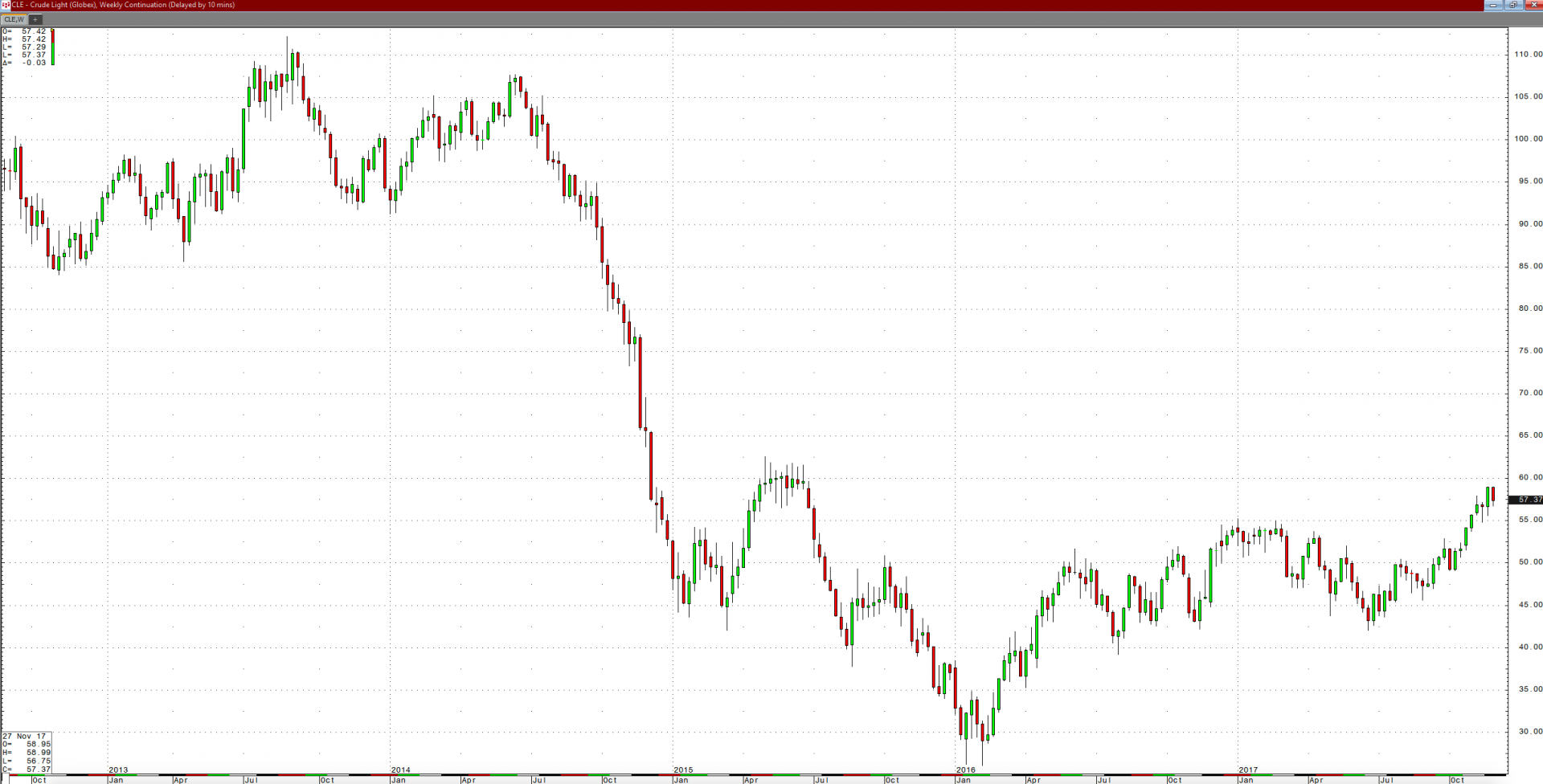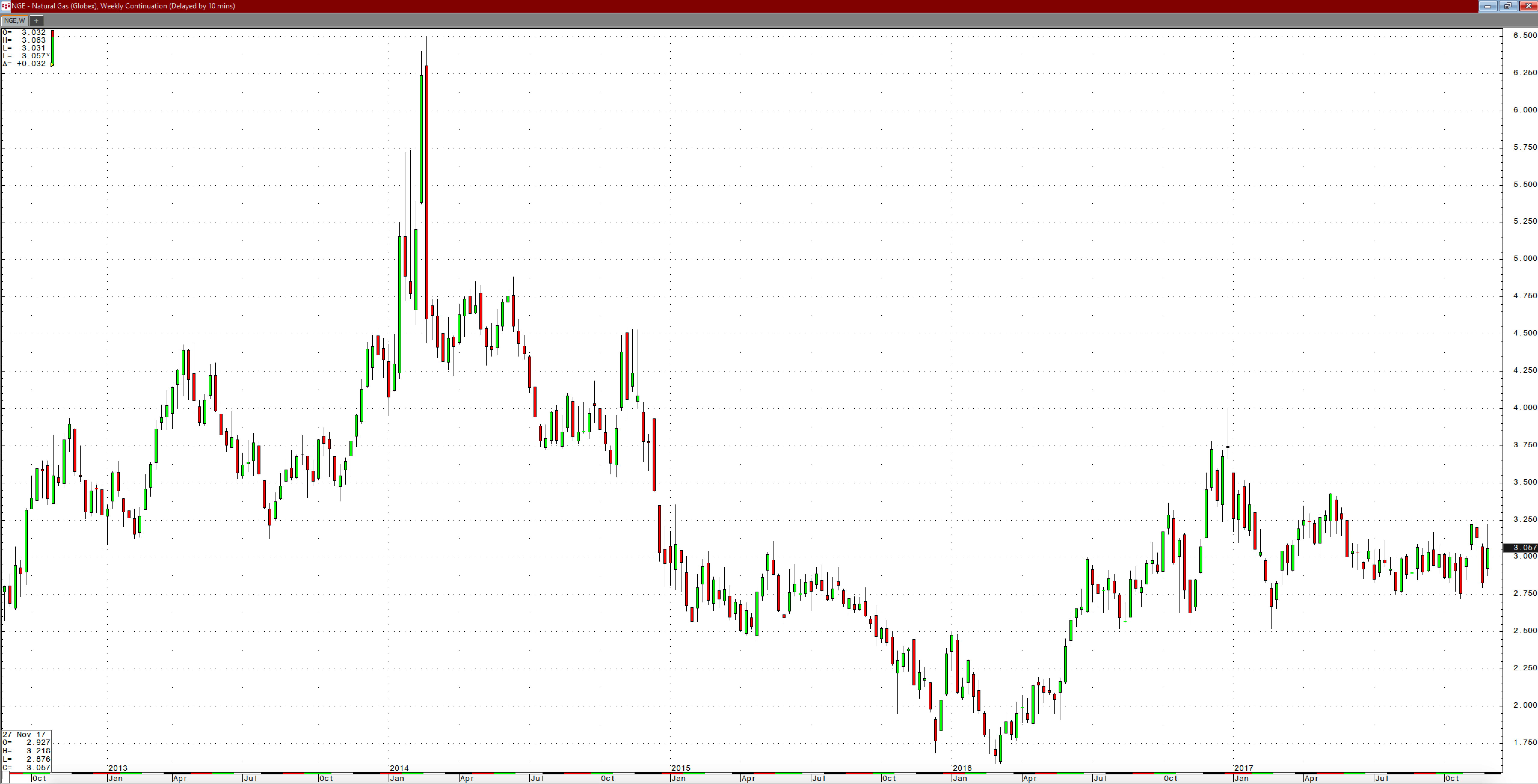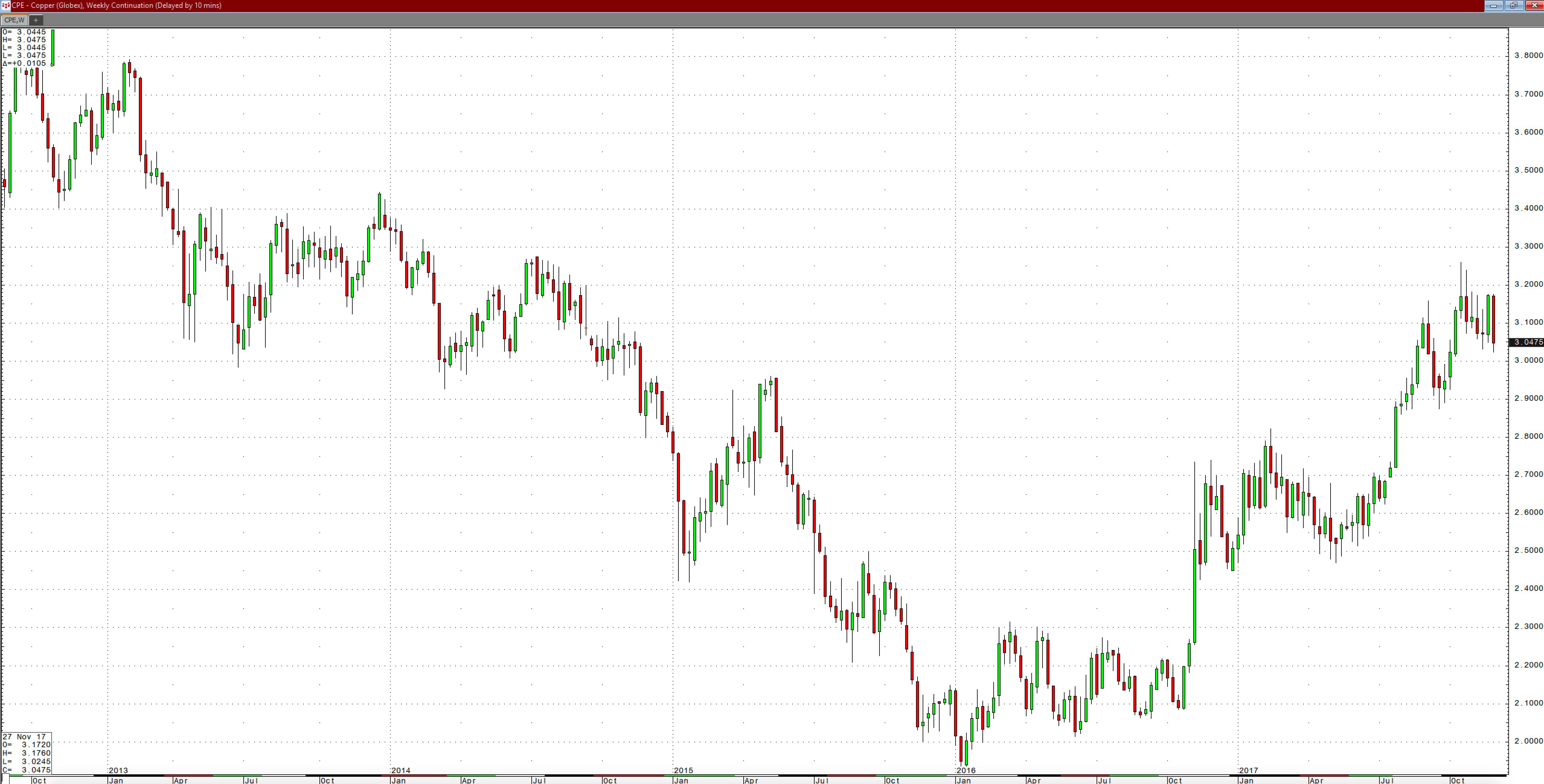The year 2017 has been an up and down year for commodities, but when the dust settles the asset class will post an overall gain on the year. Even though inflation remains below the 2% target set by the Fed and ECB, the prices of commodities continue to rise from bottoms established in late 2015 and early 2016.
Industrial commodity prices have been leaders throughout the year as economic growth in China and around the world continues to support demand for many raw materials. Nonferrous metals are among the best performing raw materials of the year. Precious metals have posted gains with palladium, the industrial and precious metal, leading the way. The price of crude oil recently rose to its highest level since June 2015, while natural gas continues to trade at prices that are around $3 per MMBtu. Meanwhile, the agricultural commodities sector has provided good news for consumers as prices have been stable to lower as weather and growing conditions around the world supported the fifth straight year of bumper crops. Inventories continue to swell, pressuring prices of many of the critical ingredients for food.
The eleventh month of the year came to an end this week, and with only one to go, 2017 has been a period of consolidation in the raw materials sector after the bear market that started in 2011 and 2012 that took many prices to multi-year lows two years ago. There are a few things to watch for during December that could provide critical clues for the path of least resistance for prices in 2018.
2017 Has Been a Bullish Year for Raw Material Markets, But There Is One Month to Go
Now that we have heard from OPEC and they extended production cuts until the end of 2018, as the market had expected, there are two factors to watch over coming weeks when it comes to the path of least resistance for many commodities prices.
On December 13, the US Fed’s FOMC will meet for the final time in 2017. There are lots of changes underway at the central bank as it will have a new leader, Jerome Powell, in 2018 and many new members of the committee. However, there is one last piece of business facing the central bank in the final month of the year, and that is the much-anticipated 25 basis point rate hike at the December meeting. Higher interest rates, when not the result of inflationary pressures, tend to be bad news for commodities prices as they increase the cost of carrying inventories. However, given current market expectations, it is likely that the only shock to the market would be if the Fed does not act at their December meeting, which would be bullish for raw material markets. Conversely, in the unlikely situation where the Fed hiked by more than 25 basis points, the shock would cause commodities prices to tumble.
The other issue to keep both eyes on is the geopolitical landscape. Problems in the Middle East and Korean Peninsula are not going away anytime soon and could flare up in the blink of an eye, sending markets across all asset classes into a frenzy of volatility. In the Middle East, the tension between Saudi Arabia and Iran continues to build. On Tuesday, November 28, the North Koreans conducted another ballistic missile test, the first since September. While markets mostly ignored the provocative move, it may be the rhetoric that flows back and forth between the US and the hermit nation that causes indigestion and higher price variance in markets.
Energy
Crude oil is going into December at its highest level of the year. NYMEX crude oil broke out above technical resistance at $55.24 in early November.
As the weekly chart highlights, the next level of technical resistance for the world’s most ubiquitous commodities futures contract now stands at the May 2015 high of $62.58 per barrel.
Meanwhile, natural gas is now going into the winter season with the lowest level of inventories in three years.
As the weekly chart illustrates, natural gas is entering the period of peak demand at around the $3.05 per MMBtu level with technical resistance at $3.2310. It will be the weather conditions across the US that determine the path of least resistance for the energy commodity over the coming weeks and months. However, with stocks at a low level, a cold winter could cause some upside fireworks in the market that has a penchant for price volatility.
Precious Metals
Precious metals are going into the final month of 2017 with palladium continuing to charge higher with its target on the $1090 level, the all-time peak price dating back to 2001. March palladium futures were trading at just over $1000 per ounce on November 30. When it comes to gold, silver, and platinum, the three most actively traded precious metals fell to lows in December 2015 and December 2016 as the dollar index was close to highs, and interest rates were rising.
As the weekly chart of the dollar index shows, unlike the previous two years, the greenback is going into the final month of 2017 close to lows, which is supportive for the prices of precious metals. However, rising interest rates could be putting a roadblock on potential gains in the sector. Gold closed on November 30 at the $1276 per ounce level, while silver was trading around $16.48 per ounce. Meanwhile, platinum was approximately $942 per ounce as all three of the metals were above lows for the year. Geopolitics will continue to support these rare metals that investors and traders tend to turn to during periods of fear and uncertainty. However, with the stock market raging to new highs and optimism in markets across all asset classes, precious metals have taken a back seat to other investment vehicles.
Industrial Metals and Minerals
Industrial commodities have moved to the upside over 2017.
COMEX and LME copper have made higher lows and higher highs since reaching a multi-year bottom in January 2016. Copper closed at the $3.05 per pound level at the end of November with support at $2.8750 and resistance at $3.2745, the 2014 peak. Meanwhile, the other ferrous and nonferrous industrial metals have been strong throughout the year, and positive economic data from China, US GDP growth at around 3%, and improving economic conditions in Europe all are supportive for the commodities in this sector.
Agricultural Commodities
The fifth straight year of bumper grain crops and abundant supplies of soft commodities in 2017 is sending the agricultural commodities into the last month of the year with ample inventories. However, demographic trends of rising population and wealth have resulted in higher lows in most of these markets on a long-term basis.
Bumper crops of soybeans, corn, and wheat prices have weighed on prices. Sugar, cocoa, coffee, cotton, and even FCOJ futures have seen lots of selling over 2017. Animal proteins have seen their ups and downs over the year. However, in the agricultural sector, each year is a new adventure as the world continues to require more food each day and weather is never a guarantee. Any price weakness during the final month of 2017 could create opportunities for the coming year where the crop cycles will start all over again, and the only certainty is that demand will continue to rise for these agricultural products alongside population and wealth increases.
I am bullish on the prospects for commodities prices in 2018. Therefore, any significant price weakness during the final weeks of this year could provide an opportunity to build long positions for the coming year. The dollar remains in a downtrend, and while interest rates in the US are rising, they remain close to historical lows. In commodities markets, we must always be prepared to expect the unexpected in the volatile asset class. However, with many markets making higher lows on a long-term basis, price dips may continue to afford market participants with bargains in the final month of this year.



